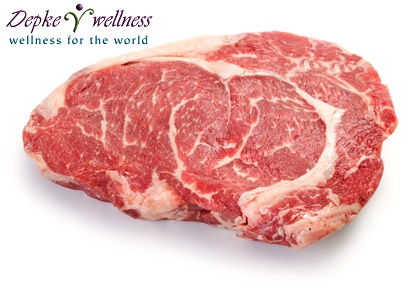Nutrition, Omega 3's, Uncategorized
Red Meat is BAD for your Heart?
by Glen Depke, Traditional Naturopath
We all know that eating red meat is bad for you heart right?
Red meat itself is not bad for you or your heart but this depends on the quality of the meat.
Red meat is actually one of the most nutritious foods you can eat.
It is loaded with vitamins, minerals, antioxidants and various other nutrients that can have profound effects on health.
A 100 gram (3.5 ounces) portion of raw ground beef (10% fat) contains:
- Vitamin B3 (Niacin): 25% of the RDA
- Vitamin B12 (Cobalamin): 37% of the RDA (this vitamin is unattainable from plant foods)
- Vitamin B6 (Pyridoxine): 18% of the RDA
- Iron: 12% of the RDA (This is high quality heme-iron, which is absorbed much better than iron from plants)
- Zinc: 32% of the RDA
- Selenium: 24% of the RDA
- This meat will be lower in fat and calories and actually grass fed beef has just a slightly higher level of fat than chicken breast. Shocking right?!
- Research shows that grass fed beef can also lower the so called bad cholesterol or LDL.
- A major bonus is the meat from grass fed cow can have at least 2 to 4 times higher omega 3 content. To maintain this higher level of omega 3’s you’ll want to seek out beef that is grass fed from beginning to end. Often they are send to a feed lot prior to slaughter and fed grains, which will degrade the omega 3 content over time.
- The conjugated linoleic acid or CLA content is also much higher, suggested to be anywhere from 3 to 5 times higher than conventionally raised cattle. Typically the higher marbled cuts of grass fed beef will enjoy the highest levels of CLA.
- Grass fed beef is also significantly higher in natural forms of vitamin E.

